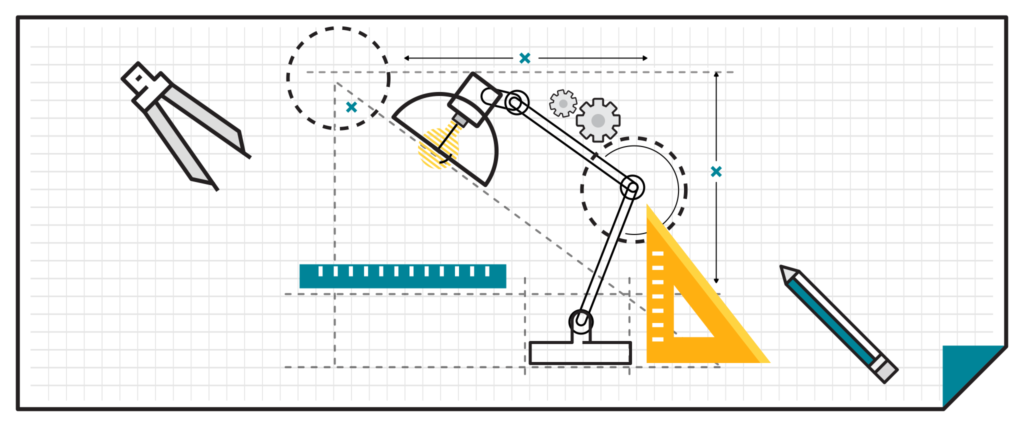Article
Smart Branch Strategy and Enhanced Customer Experience in Banking

The smart branch and its role in branch transformation
Building a “smart branch”—or multiple smart branches—is pivotal to broader branch transformation efforts for many banks.
A smart branch strategically improves the banking customer experience by enhancing the physical in-person experience, leveraging emerging digital technologies, or, most commonly, combining the two. Successful branches are more than the sum of technology like banker tablets and groundbreaking solutions like biometric-enabled ATMs and interactive kiosks, and neglecting the in-person user experience misses a prime opportunity to reach a more extensive customer base.
Even when integrating emerging technology, smart bank branches remain focused on user experience. The goal? Enhancing interactions and delivering optimized products and services to meet the needs of modern banking customers.
In this post, we’ll discuss:
- The changed (and ever-evolving) banking landscape
- Why smart bank branches are a vital consideration for banks across the spectrum
- The importance of human-centered experience design
- Omni-channel integration opportunities, enabled via best-in-class fintech solutions
- Case studies, challenges, solutions, and a path forward for banks

The necessity of smarter banking operations in a changed world
In June 2019, authors from McKinsey wrote:
“Many bank processes are anchored to how banks have always done business—and often serve the needs of the bank more than the customer. Banks need to reverse this dynamic and make customer experience the starting point for process design. To do so, they need to understand what customers want, and how and when they want it. Instead of a major cost center, operations of the future will be a driver of innovation and customer experience.”
McKinsey’s insights were written before the COVID-19 pandemic struck. Though the tide was changing in the months and years before the pandemic, COVID-19 highlighted various challenges in the financial industry. This further justified the need for streamlined, touchless, primarily digital workflows, necessitating a broader shift in how banks serve their customers.
Regional banks were some of the most successful in adapting to and overcoming COVID-related challenges through tremendous strategic innovation efforts. Examples include:
- CBL State Saving Bank adopting innovative ways to engage and retain employees
- Bank of Utah ensuring customers could still safely engage in-person when possible
- HAB Bank’s IT team working diligently to support a hybrid, digitally-enabled workflow
There are numerous other examples from powerhouse regional banks, but these three highlight some critical challenges that smart banking solutions seek to solve:
- Effective employee engagement and utilization
- Omnichannel customer engagement, integrated at every point of contact
- Adapting legacy systems to the nature of banking in a digitally transformed world
The landscape of the banking industry (and dozens of others) has been permanently changed. Even if we see a moderate shift back to pre-pandemic processes and workflows, institutions must think proactively and accelerate their approach to building smart bank branches in order to stay competitive.

“Product Innovation Is A Human Process”: Ensuring smart bank branches prioritize user-centered experience design
Consider artificial intelligence (specifically, generative AI for fintech) and its proliferation across every industry.
On the topic of leveraging emerging fintech to address bank customer pain points, Mickey Marshall—assistant vice president and regulatory counsel for the Independent Community Bankers of America (ICBA)—posits that “while AI has the potential to reduce some operational costs or to improve the accuracy of loan underwriting, it will never replace local knowledge and personal relationships—the value of which is inestimable and are clear differentiators for community banks.”
In a separate article, Mr. Marshall cites specific regional bank use cases like “helping a first-time homebuyer get a mortgage or helping a small business or farm finance its operations” as prime banking use cases where the value of human connection is irreplaceable. Relationships in these scenarios—or any other where trust is a critical currency (universally the case in the financial industry)—are vital to maintain and shouldn’t be deprioritized in adopting cutting-edge fintech solutions.
However, to stay competitive, remain relevant, and keep pace with other financial institutions, banks must consider adopting emerging fintech in a meaningful, value-generative way. In line with Mr. Marshall’s thinking, we agree that product innovation is a human process and will continue to be, with thoughtful experience design serving as a fundamentally necessary component of any digital transformation effort.
When considering fintech adoption for smart bank branches and easing concerns that the technology will adversely affect the human-to-human connection, which is so central in banking, institutions must focus on building strategic customer experiences where individuals and their needs are kept at the forefront.

Creating an omnichannel customer journey and enabling financial inclusion
Across every sector, including financial services and banking, customer experience is shifting toward highly personalized, highly flexible engagement models. With abundant fintech tools that allow regional banks, community credit unions, and other smaller financial institutions to use customer insights to orchestrate meaningful action, there’s a prime opportunity to serve customers better and build loyalty.
The concept of entirely digital bank branches can feel off-putting, especially when considering historical approaches to banking services. For some, the notion of a “smart branch” conjures up an image of a futuristic facility where technology has replaced every element of human-to-human connection. Additionally, getting started with this level of branch transformation can feel daunting—even impossible.
But here’s the critical point: at the most foundational level, the goal of creating smart bank branches is the omni-channel integration of financial services. In other words, providing a seamless banking customer experience across all channels, including in-branch, mobile, and online.
If fintech enables that, which it often does, then it’s worth considering. Furthermore, the degree to which a bank transitions to a smart branch model is highly scalable, based on the institution’s technological and staffing resources.
Back to the value of omni-channel integration. As all-star fintech thought leader Lauren Crossett suggests, the aim of incorporating smart technology is to ensure that brick-and-mortar facilities are “no longer separate from other digital banking channels” and that they provide “a 360-degree view of their customers’ journeys [ . . . ] so banks can engage customers by offering them the right loan, credit card, or another product at the right time.”
Banks can also consider creating broader access—via omnichannel integration—to attract new customers and serve the populations that need access to high-quality financial services the most.
One critical underlying problem to be solved via hyper-personalization is “financial inclusivity.” As discussed by Financial Magnates in their LinkedIn post, there are several vital elements to consider when building “a thriving banking sector [that ensures] all individuals, regardless of background, have access to the tools and opportunities offered by the financial landscape.”
- Breaking down “barriers to entry” with fintech: “By leveraging innovative solutions, banks can extend their reach to underserved populations, offering a gateway to financial services without the constraints of physical infrastructure.”
- Customized financial products for each customer’s financial journey: “Flexibility in product design ensures that financial services are not one-size-fits-all but rather adaptable to the unique circumstances of each individual.”
- Smart networks unified by a shared organizational vision: “By maintaining a strategic balance between digital channels and physical branches, banks can cater to both urban and rural populations, ensuring that individuals in remote areas have access to essential financial services.”
Implementing innovative branch transformation initiatives allows banks to simultaneously address changing customer expectations while addressing the financial needs of a more diverse customer base. Whether enabling remote expert assistance through video conferencing and AR and VR technology, introducing self-service options for various financial products, or leveraging any other fintech solutions, the aim is to meet each customer where they are in their banking journey.
The push toward “invisible banking” is well underway, but decision-makers’ efforts to digitize must be undertaken strategically. The banks that succeed most in the branch transformation process will seek to understand individuals from different backgrounds, those with unique needs, and underserved populations, taking action based on empathy for the end user.

Synchronizing digital and physical elements for holistic branch experience design
The technology available to institutions in the midst of bank branch planning is impressive.
With Pinwheel Smart Branch, banks can leverage an off-the-shelf solution that addresses common challenges in the branch transformation process.
Source Technologies’ self-serve kiosks improve employee experience, broaden financial inclusivity for traditionally underserved communities, and enable customer service-focused “universal banker” models for regional banks and credit unions.
Meraki’s hardware solutions are outstanding options for financial institutions undertaking branch transformation. Enabling “smart networks” via access points, smart cameras, sensors for branch security, and endpoint management platforms, Meraki’s solutions are highly viable options for RF engineers and IoT product developers enlisted to assist banks with their transformation.
However, as banks rethink their branch network strategies, it is crucial to transform the physical spaces themselves to create a truly integrated, end-to-end banking customer experience.
In its article on branch banking in the future, thought leaders at Ipsos advise looking at experience design in other industry verticals for inspiration. Santander Work Cafe and Capital One Cafe are prime examples of banks thinking outside the box about how to blend the physical bank branch and the digital bank branch into a cohesive experience that encourages in-person visits to facilities.
Regions Bank—one of Fortune’s most innovative companies for 2024—has been highly strategic in rethinking its multi-pronged innovation journey, to great effect. Among numerous innovation initiatives to modernize traditional banking service models, the bank also invests in financial education programs for customers and specialized programs for small businesses.
Regarding developing smart branches, in Chattanooga (Tennessee), Regions Bank closed three dated branches, opening a more modern, innovative branch that consolidates services and provides various products and services to meet the needs of modern banking customers.
Jamie Stogsdill, Vice President/Consumer Banking Manager at Regions Bank, communicated that Regions Bank’s branch transformation efforts in Chattanooga connect back to a critical objective: “Helping customers build a personalized path to financial confidence.”

Considering smart branch transformation? Challenges, solutions, and a path to value
As banks look towards the future, branch transformation presents significant opportunities in light of specific challenges.
One major obstacle to overcome is resistance to change, as traditional banks may hesitate to adopt new technologies. The financial impact of adopting innovative fintech is also daunting. Integrating advanced technologies with existing systems requires careful planning and execution, and any decision must be made with customers at top of mind, ensuring comfort and trust with the unveiling of new products and services.
To navigate these challenges, banks can consider:
- Phased implementation: Work with an experienced innovation firm to gradually introduce new technologies while managing costs and continually measuring effectiveness.
- Investment in comprehensive employee training: Incorporate strategic onboarding and education programs to ensure your staff are well-prepared to handle new technology systems and continue assisting customers effectively.
- Including customers in the transformation process: Through educational programs and customer involvement in the transformation process (surveys, feedback, testing, etc.), banks can ensure a seamless transition that not only preserves trust but generates more of it.
- Forming partnerships and collaborations with financial technology experts: A team like Fresh’s brings invaluable insights and resources about how to integrate fintech and innovate effectively. Your bank has historical expertise about your business and customers, and our team can provide the guidance needed to innovate in line with your brand and drive toward your most critical objectives.
In conclusion, branch transformation efforts are crucial for banks aiming to stay relevant in a rapidly evolving financial landscape. By addressing the challenges above with strategic solutions, banks can create modern, efficient smart branches that meet their customers’ needs, enhance their satisfaction, and lead to long-term relationships and sustained success.









